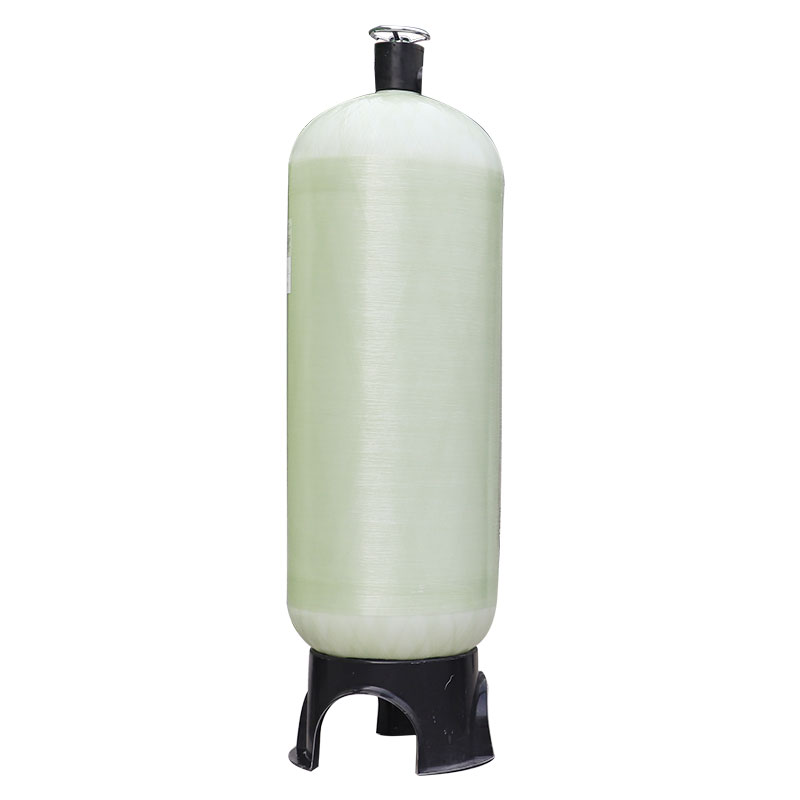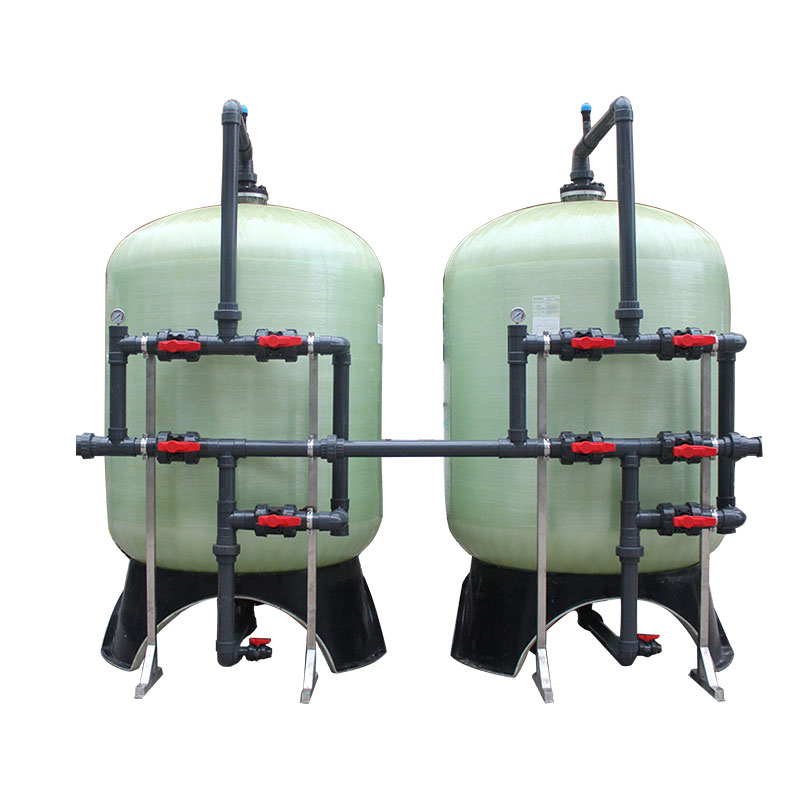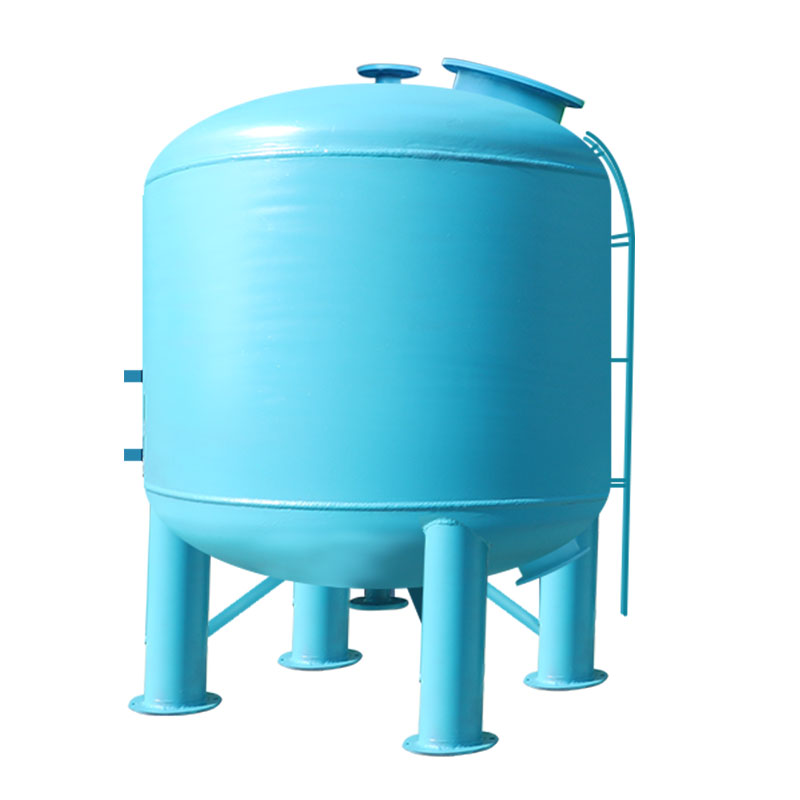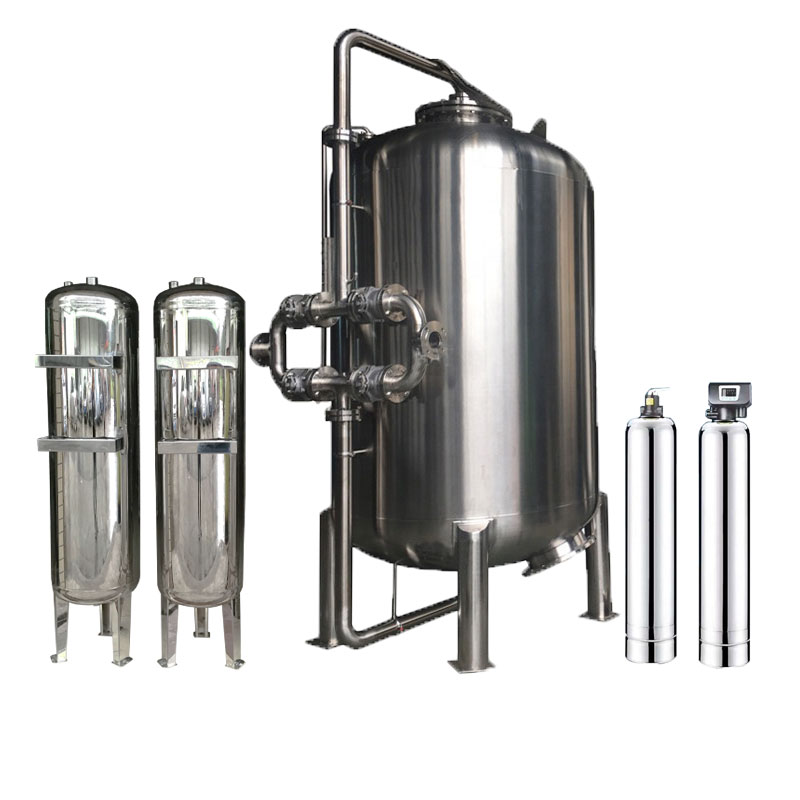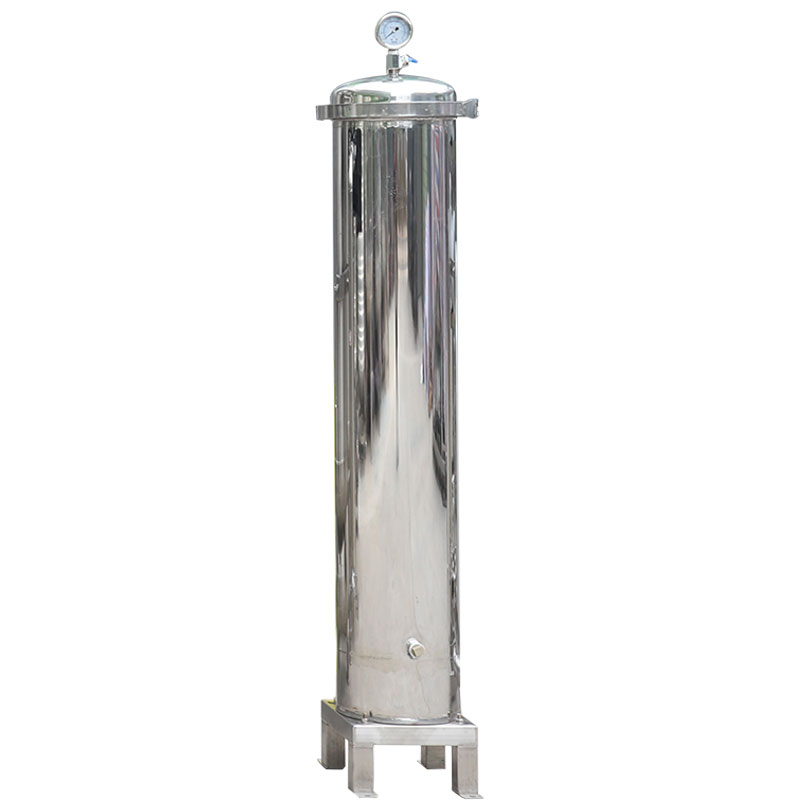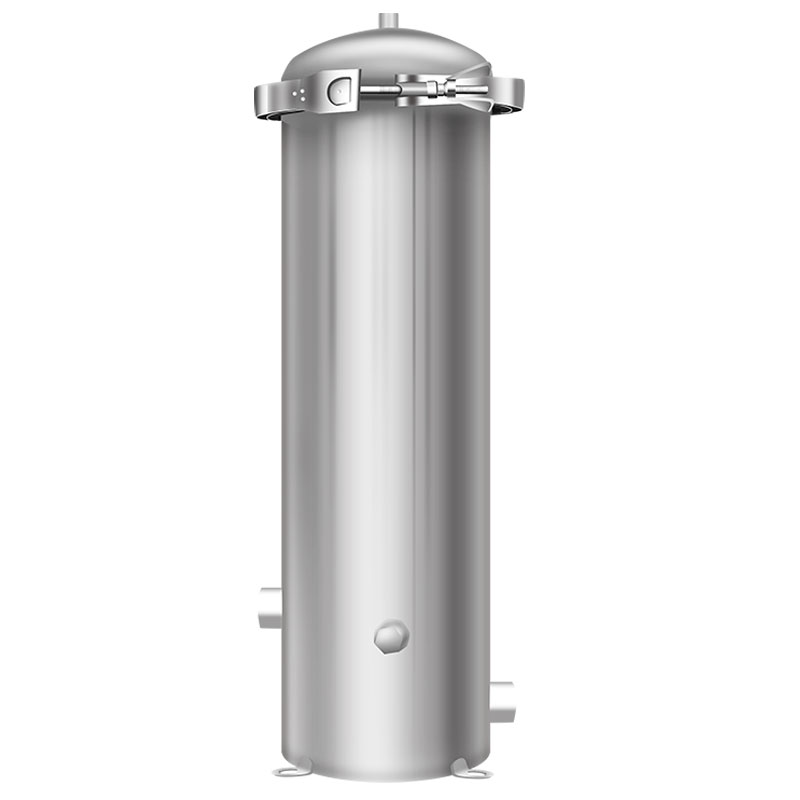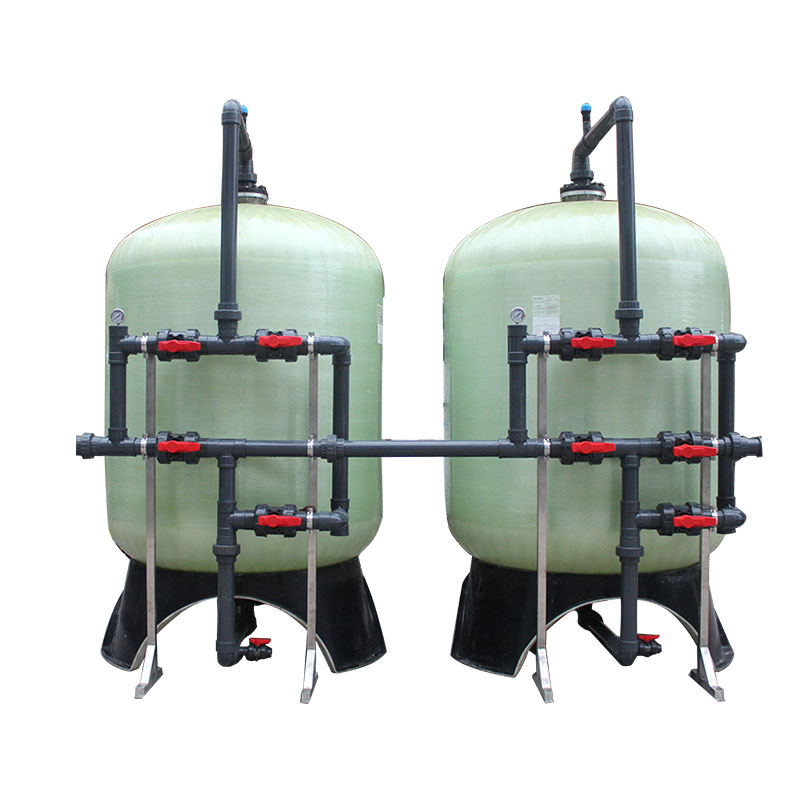
Sand Filter Media Tanks
Sand Filter Media Tanks
The Water Treatment Rule specifies four filtration technologies, although it also allows the use of alternate filtration technologies (e.g., cartridge filters).
These include slow sand filtration or rapid sand filtration, pressure filtration, diatomaceous earth filtration, and direct filtration. Of these, all but rapid sand filtration are commonly employed in small water systems that use filtration.
Each type of filtration system has advantages and disadvantages. Regardless of the type of filter, filtration involves
the processes of straining (where particles are captured in the small spaces between filter media grains), sedimentation (where the particles land on top of the grains and stay there), and adsorption (where a chemical attraction occurs between the particles and the surface of the media grains).
Sand Filter Media Tanks

Depth filters (mechanical filter tank), also called multimedia filters or quartz sand filter tank , are used to remove suspended solids, turbidity, and species contributing to SDI from RO feed water for most of water source, such as river, seawater, lake water. Our seawater desalination equipment is unique for seawater desalination. Multimedia filters, mechanical filter tank contain (from top to bottom) anthracite, sand, and garnet with each medium being of a different size. Solids are removed from the water using a sieving action in quartz sand filter tank; the largest particles are removed at the surface and the smaller particles are removed at the bottom of the filter bed. Multimedia filters or quartz sand filter tank should be operated at 5 GPM/ft2 for optimum performance prior to on RO system.
Polymer coagulants are sometimes used prior to the filter to help with “bridging” and removal of smaller particles. Dosages of polymers are typically less than 1 ppm. Increasing the dosage and watching SDI of the filter effluent can determine the optimum dosage. After plotting the SDI as a function of the polymer dose, there will be a minimum in SDI at the optimum dosage of the polymer.
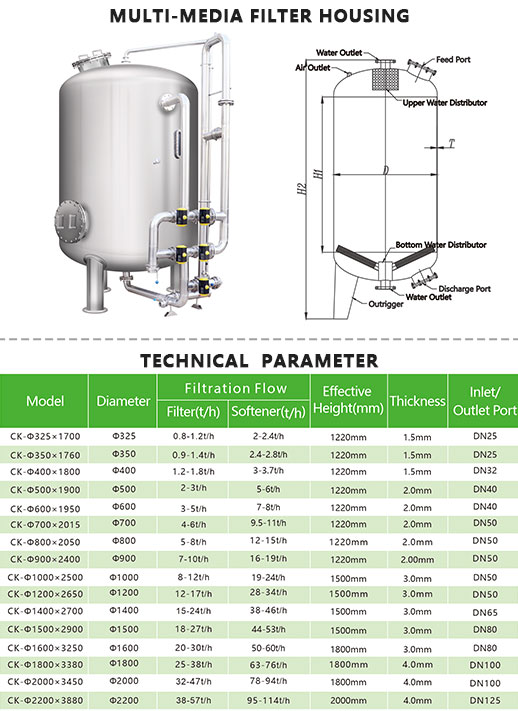
Mechanical filter tank, Iron-removal filters such as manganese green sand filters are used to remove soluble iron and manganese (and some hydrogen sulfide) from RO feed water. The metals are oxidized to insoluble species by the media and then filtered out by mechanical filter tank. Manganese green sand is simply glauconite particles coated with manganese oxide and dioxide. This coating acts as a catalyst in the oxidation of the iron and manganese. An oxidizer, such as chlorine or potassium permanganate is required. If iron alone is present, feed chlorine at a rate of 1 ppm per ppm of iron. If manganese is present, potassium permanganate is required at a dosage rate of 1 ppm per ppm of iron plus 2 ppm per ppm of manganese. Manganese green sand will remove hydrogen sulfide from RO feed water, but as the compound oxidizes into elemental sulfur, which is a sticky substance, it will coat and deactivate the media. The recommended design flow rate is 5 GPM/ft2. Better iron removal media (BIRM) filters are also used to remove iron and manganese from RO feed water in mechanical filter tank. BIRM is a man-made material consisting of granular zeolite with an inert center and a fine coating of manganese dioxide on the exterior. BIRM requires the presence of an oxidizer, such as chlorine or potassium permanganate. There are a variety of other iron-removal media available that rely on a form of manganese dioxide. Also if your seawater has iron content, before our seawater desalination equipment, we can use mechanical filters.
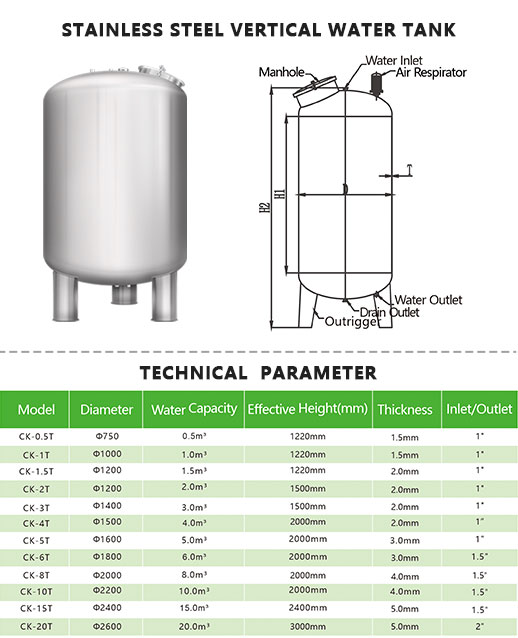
Quartz sand filter tanks are our most popular filtration equipment. Because quartz sand filter tanks are cost effective and filter media is very cheap and it is very effective to remove particles before membrane process.
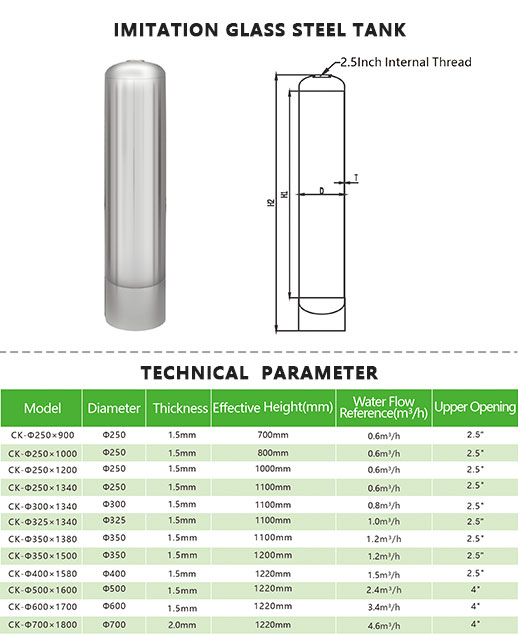
Filter media tanks also can be used in seawater desalination equipment. Mostly our customers are asking, their seawater has turbidity and is it possible to use mechanical filters at seawater desalination equipment? Yes, all of them can use it, sand filters and activated carbon filters are mainly use in seawater desalination equipment.





